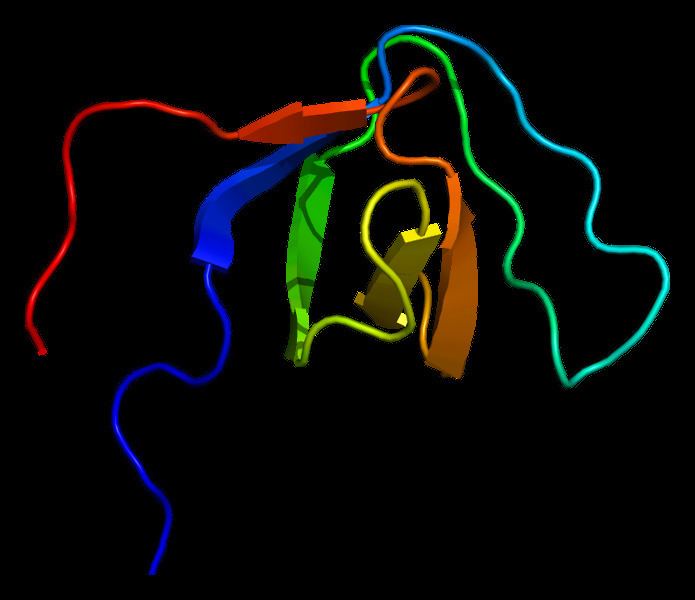Entrez 10580 | Ensembl ENSG00000095637 | |
 | ||
Aliases SORBS1, CAP, FLAF2, R85FL, SH3D5, SH3P12, SORB1, sorbin and SH3 domain containing 1 External IDs MGI: 700014 HomoloGene: 83252 GeneCards: SORBS1 | ||
CAP/Ponsin protein, also known as Sorbin and SH3 domain-containing protein 1 is a protein that in humans is encoded by the SORBS1 gene. CAP/Ponsin is part of a small family of adaptor proteins that regulate cell adhesion, growth factor signaling and cytoskeletal formation. CAP/Ponsin is mainly expressed in heart, skeletal muscle, liver, adipose tissue, and macrophages; in striated muscle tissue, CAP/Ponsin is localized to costamere structures.
Contents
Structure
CAP/Ponsin may exist as thirteen alternatively-spliced isoforms, ranging from 81 kDa to 142 kDa. CAP/Ponsin is part of an adaptor protein family, of which ArgBP2 and vinexin are also a part. These proteins contain a conserved sorbin homology (SOHO) domain and three SH3 domains, and CAP/Ponsin is expressed in heart, skeletal muscle, liver, adipose tissue, and macrophages.
Function
In muscle, CAP/Ponsin plays a role in the formation of mature costameres from focal adhesion-like contacts during assembly of the contractile apparatus, as overexpression of CAP/Ponsin disrupted normal cell-matrix contact morphology. In a mouse model of viral myocarditis due to Coxsackievirus infection, CAP/Ponsin stabilized antiviral type I interferon production and was protective against apoptosis and cytotoxicity. CAP/Ponsin has also been shown to be a major regulator of insulin-stimulated signaling and regulation of glucose uptake, by potentiating insulin-induced phosphorylation and recruitment of CBL to a lipid raft signaling complex involving flotillin. A role for CAP/Ponsin in macrophage function was illuminated by the finding that mice harboring SORBS1-deficient macrophages in bone marrow was protective against high-fat diet-induced insulin resistance and showed reduced inflammation. In non-muscle cells, CAP/Ponsin inhibits cell spreading and focal adhesion turnover, as its siRNA-mediated knockdown resulted in enhanced PAK/MEK/ERK activation and cell migration.
Clinical Significance
CAP/Ponsin was demonstrated to be down-regulated in end-stage heart failure patients; an effect that was restored upon mechanical unloading. A single nucleotide polymorphism in SORBS1 was found to be associated with type 2 diabetes and obesity.
Interactions
SORBS1 has been shown to interact with:
